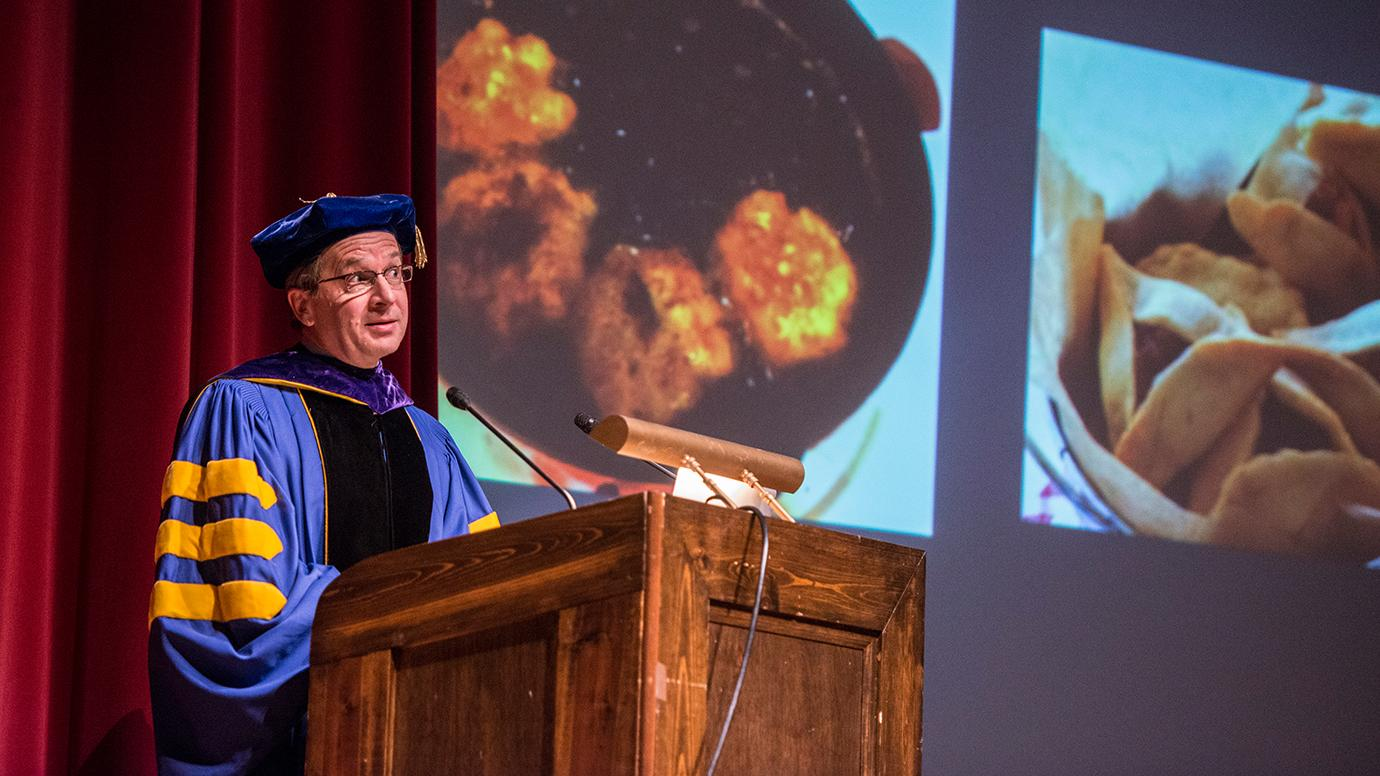Nothing Can Keep Professors From Arguing Over Jewish Food
Every December since 1946, the students and faculty of the University of Chicago—some of the world's finest minds, they will be more than happy to tell you—have come together to debate one of the most important questions facing humanity: Which are better, latkes or hamantaschen? Not even a pandemic can halt the pursuit of truth, and so this year, for the very first time, the debate will be online (which means I no longer have a valid excuse for missing it). It starts tomorrow night, December 17, at 7 p.m. Central.
The Latke-Hamantash Debate is one of the most beloved traditions at the university whose unofficial motto is "Where fun comes to die." (There are sweatshirts available for purchase at the university bookshop.) It began just after World War II, Rabbi Anna Levin Rosen, executive director of U of C Hillel, explained in a news release, when Jews all over the world were still reeling from the Holocaust. But life, and Hanukkah, still went on, and so a historian, an anthropologist, and a rabbi decided to combine two great Jewish traditions—nonsensical debate and food—to mark the occasion. "The Latke-Hamantash Debate is grounded in recognition of the pairing of mourning and rejoicing that is at the center of Jewish ritual," said Levin Rosen. "More importantly, it's grounded in food, which is the real heart of Jewish tradition."
There are a few ground rules for the debate: it must be conducted in the style of a symposium, the participants must have a Ph.D. or equivalent advanced degree and use the technical language of their disciplines, they must show up in full academic regalia, and one must be a non-Jew. Afterwards, the debaters and audience adjourn to a reception for "primary source evaluation" (plain English translation: they stuff their faces with latkes and hamantaschen).
The debate is such a beloved tradition that the U of C Press published a book in 2005 that recounted its history and some of the more memorable arguments. A divinity scholar argued that hamantaschen represent the womb, which was worshipped in early matriarchal societies. A literature professor presented Love and Latkes, a previously unknown sequel to Pride and Prejudice, as evidence of Jane Austen's fondness for fried potatoes. There have been Freudian interpretations ("Freud... was secretly in the pay of, yes, the Manischewitz people"), Machiavellian interpretations ("Although Machiavelli was a latke man, he has to be analyzed like a hamantash"), and anthropological analysis ("It could not be by chance that the English translation of the letters on the dreidl, the Khanuke top, spells out T-U-M-S"). A physicist has declared the entire debate invalid: "This question would not pass scrutiny on an SAT test, since it unfairly favors one ethnic and gender group over another: e.g., it favors the NY and Brooklyn establishment over the Midwest Rust Belt, and pits female latke workers against male hamantash bakers."
Despite all the great minds that have taken part in this debate, it has never been resolved. Or, rather, a winner has never been declared.
This year, the debate will take another tack since we can all agree 2020 has been hard enough: "Latke and hamantash: Can they come together after all this time?" Instead of the traditional reception, spectators will conduct further research in their own kitchens.
